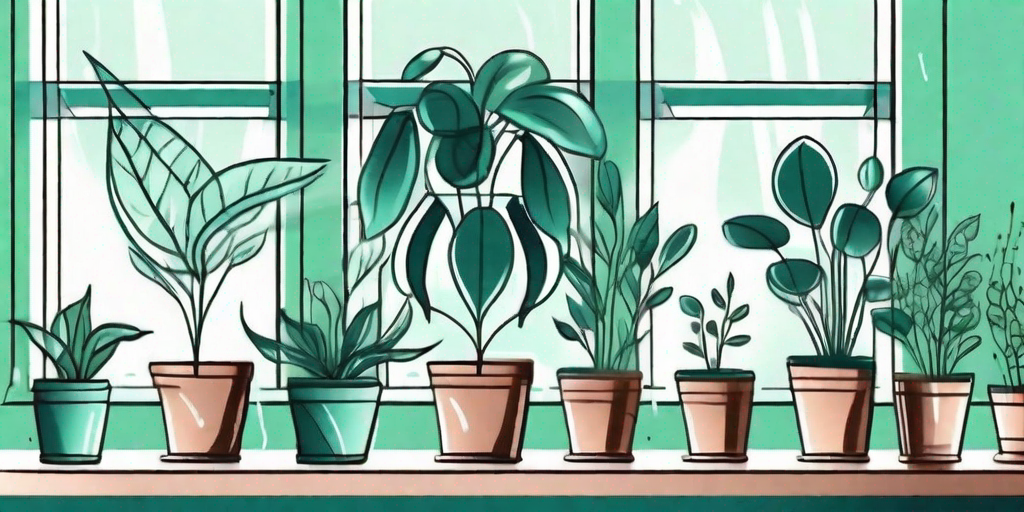
Beans, those humble legumes that have been a staple in our diets for centuries, are not only nutritious and versatile in the kitchen, but also surprisingly easy to grow indoors. With a little bit of know-how, some patience, and a dash of humor, you too can become a bean-growing guru in your own living room. So, buckle up, bean enthusiasts, and let's embark on this legume-filled journey together.
Why Grow Beans Indoors?
Before we dive into the 'how', let's address the 'why'. Why, you might ask, would anyone want to grow beans indoors? Well, there are several reasons that might tickle your fancy.
Firstly, growing beans indoors allows you to control the growing environment. This means no more battling with unpredictable weather, pesky pests, or soil-borne diseases. You can provide your beans with the perfect conditions for growth, all year round.
Secondly, it's a fun and rewarding hobby. There's something incredibly satisfying about watching your little bean sprouts grow into mature, fruit-bearing plants. Plus, it's a great way to teach kids (and adults!) about the wonders of nature and the importance of patience.
Lastly, it's cost-effective. Once you've got your setup, you can enjoy a continuous supply of fresh, organic beans without having to spend a fortune at the grocery store.
The Bean Basics: Choosing Your Beans
Now that we've covered the 'why', let's move on to the 'what'. There are many different types of beans out there, each with their own unique characteristics and growing requirements. So, how do you choose the right beans for your indoor garden?
Firstly, consider the space you have available. Some beans, like pole beans, can grow quite tall and will require a trellis or some sort of support. Others, like bush beans, are more compact and can be grown in pots or containers.
Secondly, think about your personal preferences. Do you prefer green beans, black beans, kidney beans, or something else entirely? Choose a variety that you enjoy eating and that will thrive in your indoor environment.
Lastly, consider the growing conditions. Some beans prefer cooler temperatures, while others need a lot of heat to germinate and grow. Make sure to choose a variety that is suitable for your indoor environment.
The Bean Blueprint: How to Grow Beans Indoors
Step 1: Gather Your Supplies
Before you can start growing your beans, you'll need to gather some supplies. Here's a basic list to get you started:
- Bean seeds
- Pots or containers with drainage holes
- Potting soil
- A sunny window or grow lights
- Water
- Trellis or support (for pole beans)
Once you've got your supplies, you're ready to start planting!
Step 2: Plant Your Beans
Fill your pots or containers with potting soil, leaving about an inch of space at the top. Then, poke a hole in the soil about an inch deep and drop in your bean seed. Cover the seed with soil and water thoroughly.
Place your pots in a sunny window or under grow lights. Beans need a lot of light to grow, so make sure they're getting at least 6-8 hours of light per day.
Step 3: Care for Your Beans
Beans are pretty low-maintenance plants, but they do require some care. Water your beans whenever the top inch of soil feels dry to the touch. Be careful not to overwater, as this can lead to root rot.
If you're growing pole beans, you'll need to provide some sort of support for them to climb. A simple trellis or even a few bamboo sticks will do the trick.
Common Bean Growing Problems and How to Solve Them
Like any plant, beans can encounter a few problems along the way. Here are some common issues and how to solve them:
- Yellow leaves: This is often a sign of overwatering. Cut back on watering and make sure your pots have good drainage.
- Slow growth: Beans need a lot of light to grow. If your beans are growing slowly, they might not be getting enough light. Consider moving them to a sunnier spot or using grow lights.
- No flowers or beans: This could be due to a lack of pollination. Since you're growing your beans indoors, you'll need to help with this process. Simply use a small brush to transfer pollen from the male flowers to the female flowers.
Frequently Asked Questions
Can I grow beans from the beans in my pantry?
Yes, you can! However, keep in mind that beans from the grocery store may not germinate as well as seeds purchased from a garden center. Plus, they might not be the best variety for indoor growing.
How long does it take for beans to grow indoors?
Most beans will start to sprout within a week or two of planting. After that, it usually takes about 60-70 days for beans to mature and start producing pods.
Can I grow beans indoors in winter?
Absolutely! In fact, growing beans indoors is a great way to keep your green thumb active during the colder months. Just make sure to provide your beans with plenty of light, as the days are shorter in winter.
Conclusion
So there you have it, folks. With a little bit of knowledge, some basic supplies, and a dash of humor, you too can become a bean-growing guru in your own home. Whether you're looking for a fun hobby, a way to save money, or just love the idea of growing your own food, indoor bean growing is a fantastic option. So why not give it a try? After all, you've bean there, done that!











